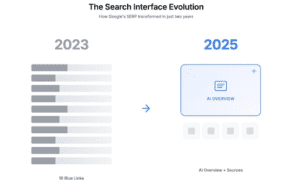Small and medium-sized enterprises (SMEs) are at a critical juncture in this age where technology defines competitiveness. Over 70% of SMEs globally see digital transformation as a necessity to remain competitive, yet only 30% have a clear strategy in place. This gap highlights the urgent need for SMEs to embrace digital tools and frameworks to thrive in an increasingly digital economy. Digital transformation is not merely an operational shift; it is a strategic necessity that allows businesses to reduce costs, enhance productivity, and improve customer satisfaction.
SMEs form the backbone of economies worldwide, contributing significantly to GDP and employment. However, their survival and growth depend on adapting to market changes, and technology is a primary driver of these changes. Digital transformation provides SMEs with opportunities to streamline processes, engage customers more effectively, and achieve scalability. Without embracing digital solutions, SMEs risk obsolescence in an evolving marketplace.
Challenges SMEs Face Without Digital Transformation
Despite the recognized importance of digital transformation, many SMEs remain resistant to change, primarily due to the perceived complexity and cost of technological adoption. These challenges, however, are amplified by the disadvantages faced by SMEs that fail to adapt.
Manual Inefficiencies Leading to Higher Operational Costs
Many SMEs continue to rely on manual processes, such as spreadsheets for accounting or paper-based inventory tracking. These inefficiencies lead to higher operational costs and slower decision-making, undermining competitiveness.
Difficulty Competing with Larger, Tech-Savvy Corporations
Large corporations often have the resources to invest in cutting-edge technology, giving them a significant advantage in efficiency, customer service, and market reach. SMEs, by contrast, struggle to match this technological prowess without deliberate digital strategies.
Limited Scalability Due to Outdated Systems
Legacy systems often lack the flexibility to scale with business growth. As SMEs expand, these outdated tools become bottlenecks, limiting their ability to seize new opportunities or respond to market demands.
Technologies Driving Transformation
The technology landscape offers a plethora of solutions tailored to SMEs, making digital transformation more accessible than ever. Key technologies driving this shift include AI and automation, SaaS platforms, and data analytics.
AI and Automation
Artificial intelligence (AI) and automation have revolutionized how businesses operate. For SMEs, these tools can automate repetitive tasks, such as data entry, invoice generation, and customer support, freeing up valuable time for strategic initiatives. AI-powered chatbots, for instance, can handle customer queries 24/7, reducing response times by up to 50% and enhancing customer satisfaction.
SaaS Platforms
Software-as-a-Service (SaaS) platforms offer affordable and scalable solutions that enable SMEs to access enterprise-grade tools without significant upfront investments. From project management to customer relationship management (CRM), SaaS platforms are modular and adaptable, growing alongside the business.
Data Analytics
Data analytics tools provide SMEs with real-time insights into customer behavior, market trends, and operational performance. By leveraging these insights, businesses can make informed decisions, optimize inventory, and personalize customer experiences. Predictive analytics, for example, can forecast demand, reducing inventory waste and ensuring product availability.
Real-World Applications
The impact of digital transformation is evident in real-world applications, where SMEs have successfully leveraged technology to achieve measurable benefits.
AI Chatbots Reducing Customer Service Response Times
By deploying AI-powered chatbots, SMEs have managed to halve customer service response times. These chatbots handle routine inquiries, escalate complex issues to human agents, and provide instant support, enhancing customer satisfaction while reducing operational costs.
Predictive Analytics for Inventory Management
Predictive analytics tools enable SMEs to forecast inventory needs with remarkable accuracy. This capability minimizes overstocking and stockouts, reducing wastage and improving cash flow. For instance, a retail SME using predictive analytics can adjust stock levels based on seasonal trends, ensuring optimal inventory management.
Cloud-Based Accounting for Financial Visibility
Cloud-based accounting platforms like QuickBooks and Xero provide SMEs with real-time financial visibility. These tools automate bookkeeping, generate instant reports, and offer integrations with other business systems, empowering SMEs to make data-driven financial decisions.
Actionable Steps for SMEs
While the benefits of digital transformation are clear, the journey requires careful planning and execution. SMEs can take actionable steps to ensure a successful transition.
Conduct a Digital Audit
A comprehensive digital audit is the first step in identifying inefficiencies and opportunities for improvement. This involves evaluating current processes, technologies, and customer interactions to pinpoint areas where digital tools can add value.
Adopt Affordable, Modular Tools
SMEs should prioritize tools that are affordable and scalable. SaaS platforms, for example, offer flexible subscription models that allow businesses to start small and expand as needed. Modular solutions ensure that investments align with immediate needs and future growth.
Invest in Training and Change Management
Digital transformation is as much about people as it is about technology. Providing training and fostering a culture of adaptability ensures that employees embrace new tools and processes. Change management strategies can help mitigate resistance and align teams with organizational goals.
Partner with Technology Providers
Collaborating with technology providers or consultants can accelerate the digital transformation journey. These experts bring valuable insights, technical expertise, and industry best practices, enabling SMEs to implement solutions effectively.
Future Projections and Trends
Looking ahead, digital transformation for SMEs will continue to evolve, driven by advancements in technology and shifting market dynamics. Key trends include:
Increased Adoption of AI and Machine Learning
AI and machine learning will become even more accessible, with tailored solutions for SMEs. These technologies will drive further automation, improve decision-making, and enhance customer experiences.
Expansion of IoT in SME Operations
The Internet of Things (IoT) will enable SMEs to connect devices, streamline operations, and gather real-time data. Applications such as smart inventory tracking and remote equipment monitoring will become commonplace.
Emphasis on Cybersecurity
As digital adoption grows, so does the need for robust cybersecurity measures. SMEs will increasingly prioritize cybersecurity solutions to protect sensitive data and build customer trust.
Sustainability and Green Technology
Digital transformation will intersect with sustainability, as SMEs adopt green technologies to reduce their environmental footprint. This shift aligns with consumer preferences and regulatory requirements, creating a competitive advantage for eco-conscious businesses.
Conclusion
Digital transformation is no longer optional for SMEs; it is a cornerstone of sustainable growth and competitiveness. By leveraging technologies such as AI, SaaS platforms, and data analytics, SMEs can overcome traditional challenges, enhance efficiency, and unlock new opportunities. Real-world examples demonstrate the tangible benefits of digital adoption, from improved customer service to optimized operations.
The journey toward digital transformation requires commitment and strategic planning. SMEs must conduct digital audits, invest in modular tools, and foster a culture of innovation to thrive in an evolving marketplace. As technology continues to advance, SMEs that embrace digital transformation will position themselves for long-term success, resilience, and sustainable growth.

































